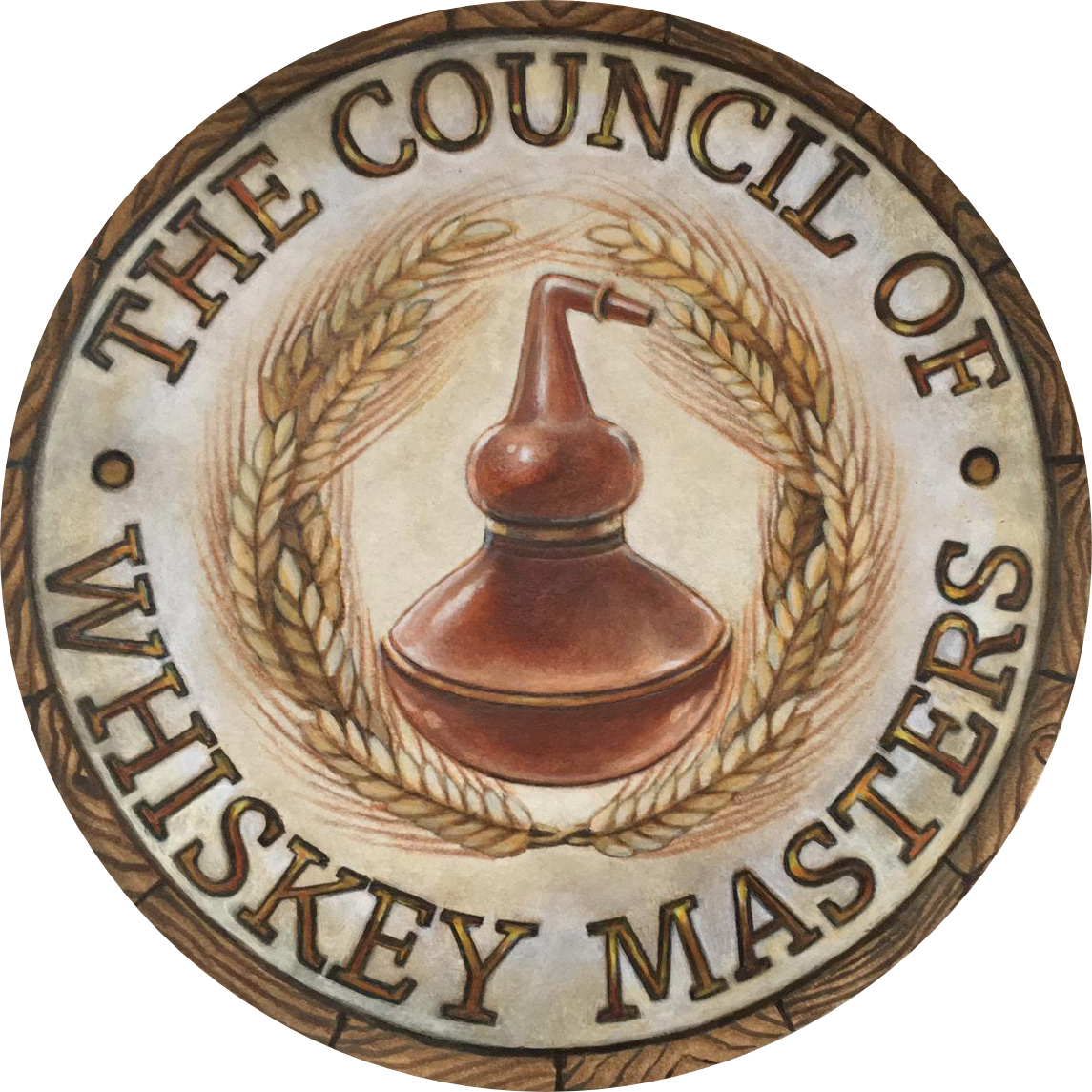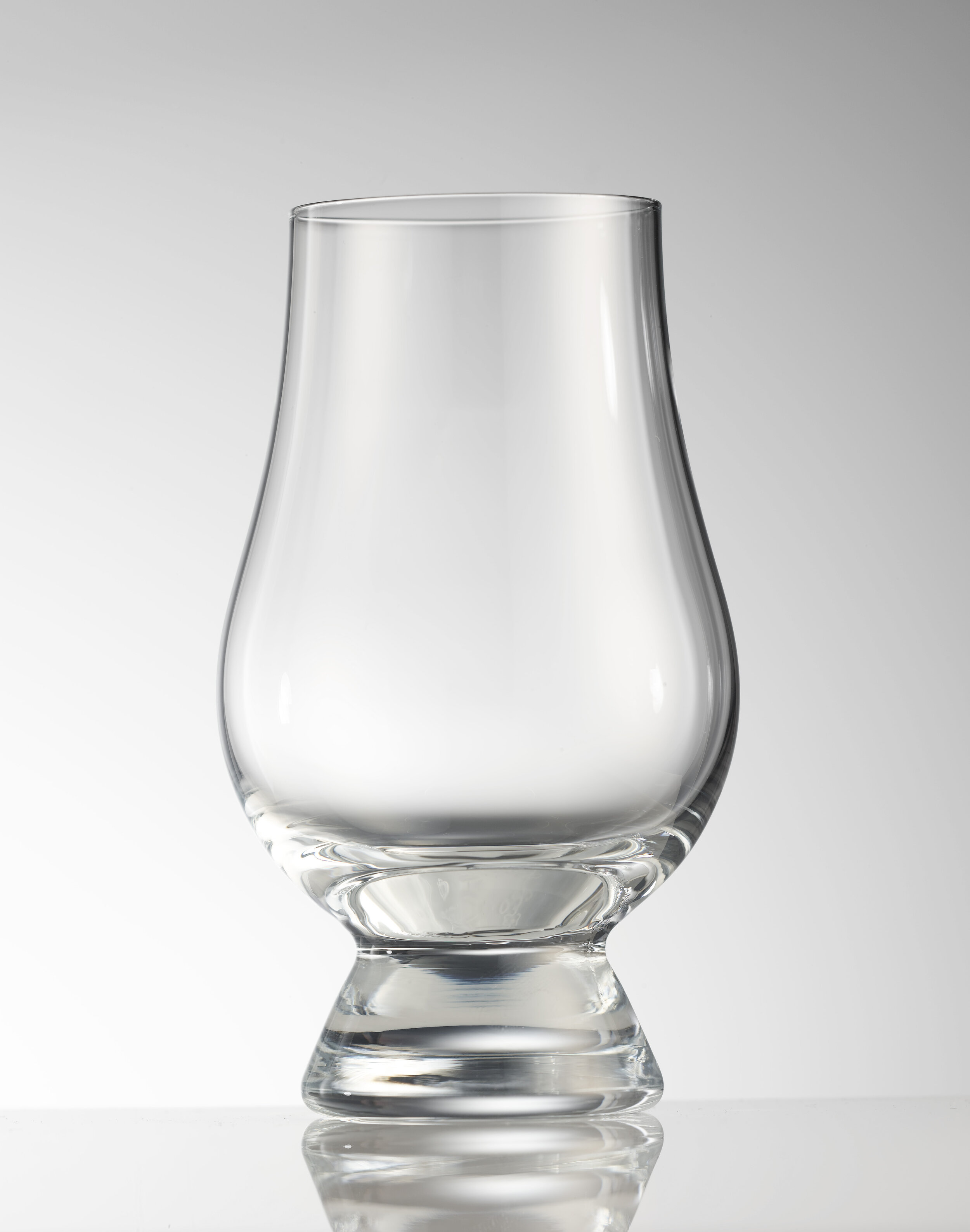Why we believe in The Glencairn Glass
Optimal Glassware Shape as a Critical Perception Aid
by Dr. Dwight Furrow, WSET Advanced Certified
Does it matter what type of glass you use for whisk(e)y? If you like to taste, analyze and fully appreciate what you’re drinking, don’t ignore the glass. The type of glass you use will affect what you smell and taste.
What are the requirements of a good whiskey glass? It should be clear and transparent so the color and movement of the whiskey can be visually assessed. The glass must be large enough to allow the liquid to be gently swirled to release aromas. The bowl of the glass should be wide enough to allow aroma molecules to pool on the surface of the liquid, yet not so wide as to encourage oxidation to happen too quickly. Oxidation doesn't destroy the whiskey, but it bonds with aroma esters, so that they become less detectable. The neck of the glass should narrow thus funneling aromas to the nose. If the neck and opening are too wide aromas will dissipate before you get a chance to enjoy them. The glass must not be too thick since many tasters prefer to use their hand to warm the whiskey for optimal expression. Yet the glass must not be too thin or fragile because it must function well in a bar context where glasses are often roughly handled. Finally, the glass must be attractive rather than clunky or unwieldy—tasting whiskey is after all an aesthetic experience and anything that detracts from the pleasure of the moment is a negative.
There are various types of glasses that have traditionally been used for whiskey tasting. Is there a glass that satisfies all these criteria? Shot glasses are common but they are not large enough to allow swirling and there is no bowl to gather aromas or neck to funnel them to the nose. Much of what whiskey has to offer will be undetectable with a shot glass. Tumblers, otherwise known as an old-fashioned glass, with straight sides and a wide mouth are also routinely used. They are larger than shot glasses and can easily accommodate ice cubes if desired. But they are not large enough to allow swirling (without wearing the whiskey) and there is no bowl or neck to gather and focus the aromas. Many of the subtle aromas of a fine Scotch will dissipate off the surface before reaching the nose in a tumbler. Furthermore, the thick glass inhibits hand-warming the whiskey and many tumblers have decorative cuts or thick walls that distort visual assessment.
Cognac glasses, otherwise known as “snifters”, solve some of these problems. They have a bowl to gather aromas that tapers at the rim in order to focus the aromas. But cognac glasses are fragile. Furthermore, the relative size of the large bowl and the small, tapered rim is not ideal for whisky as it will concentrate too much over-powering alcohol thus masking the subtle flavors of a good whiskey.
The tulip-shaped glass or copita has also been used by serious tasters. It has a stem, which some whiskey drinkers find is unnecessary, and is fragile like a wine glass making it difficult to use in contexts where it will be roughly handled. Furthermore, the rim doesn’t flare thus concentrating unwanted alcohol vapors.
Until about twenty years ago, whiskey tasters were forced to live with the limitations of these glass types. That is what motivated Raymond Davidson the founder of Glencairn Crystal, with input from master blenders, to design a glass specifically for whiskey that incorporated the advantages of the other glass styles while eliminating the disadvantages. The Glencairn glass has a smaller bowl than a snifter with a tapered neck to capture aromas and a flared rim allowing aromas to concentrate while blowing off unwanted alcohol vapors. The flared rim also allows the liquid to pour onto the tongue at a broader angle than with a tapered rim. The Glencairn glass is large enough to allow you to swirl the liquid while the clear glass allows visual assessment. The bowl fits comfortably in the hand if you should want to warm the liquid. The unwieldy stem of the copita is replaced by a short, solid base and the glass is thick enough to withstand some abuse without feeling clunky.
In short, the Glencairn glass is perfect for whisk(e)y tasting, which is why it has won the endorsement of the Scotch Whisky Association and the Council of Whiskey Masters and is used by spirits professionals around the world. There are other much more expensive options available. But most either lack the proper size bowl for capturing aromas, have thin, fragile walls limiting their usefulness, or are oddly shaped making them impractical for a variety of tasting contexts. Only the Glencairn glass strikes the proper balance between practicality, aesthetics, and aromatics.
If you’re just getting into whiskey you may not be practiced enough to sense the subtle aromas emanating from the spirit. But as you acquire more appreciation of what whiskey has to offer, the Glencairn glass will be essential to getting the most out of your experience.
———————
Find detailed information about our whisky study program at www.WhiskeyMasters.org.

